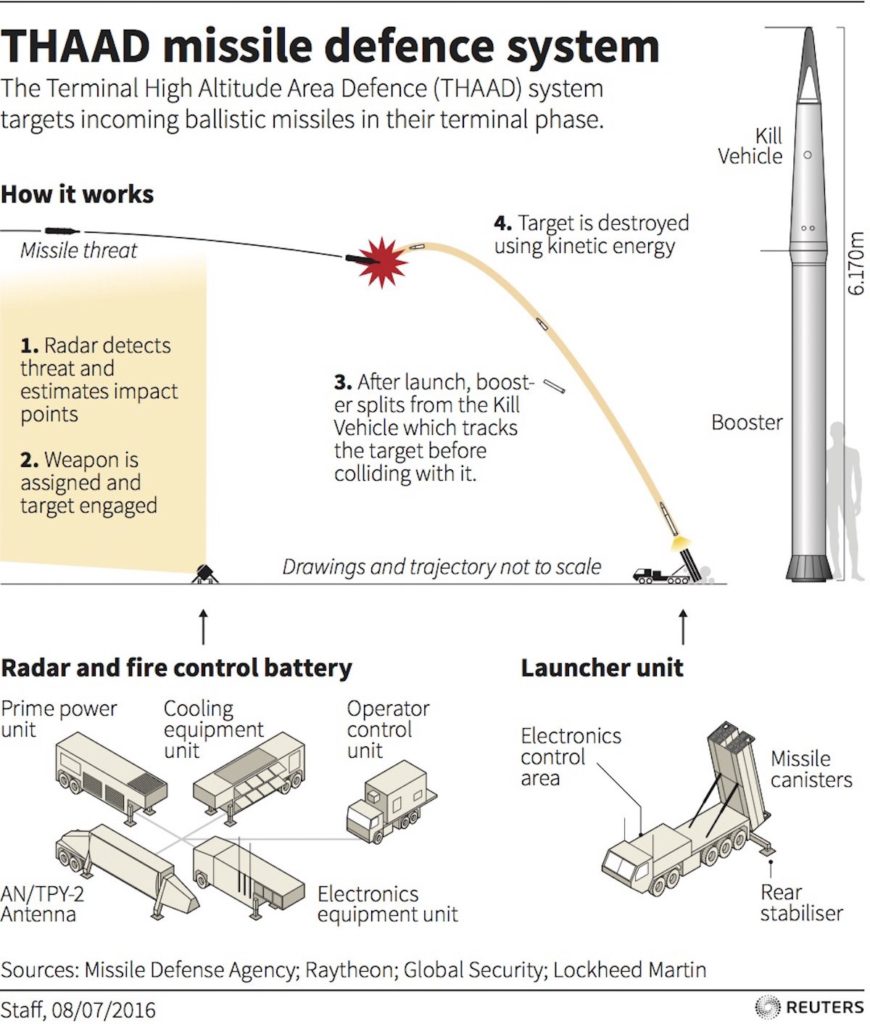Business Insider:

Here’s a brief breakdown of the process:
1. Radar detects threat
THAAD’s first line of defense is its radar system.
“We have one of the most powerful radars in the world,” Kyle Terza, of Space and Missile Defense Command and a former THAAD battery commander, told Business Insider in a previous interview.
Raytheon’s AN/TPY-2 radar is used to detect, track, and discriminate ballistic missiles in the terminal (or descending) phase of flight.
The mobile radar is about the size of a bus and is powerful enough to scan areas the size of entire countries, according to Raytheon.
2. Weapon is assigned and target engaged
Each launcher unit carries up to eight missiles and can send multiple kill vehicles at once, depending on the severity of the threat.
Once an enemy threat has been identified, THAAD’s Fire Control and Communications support team kicks in. If there is a decision to engage the incoming missile, the launcher fires an interceptor to hunt for its target.
3. After launch, a booster splits from the kill vehicle and tracks the target before colliding with it
While in flight, the interceptor will track its target and obliterate it in the sky.
4. Target is destroyed using kinetic energy
Impressively, the THAAD interceptor does not carry a warhead. Instead, the interceptor missile uses pure kinetic energy to deliver “hit to kill” strikes to incoming ballistic threats inside or outside the atmosphere….
